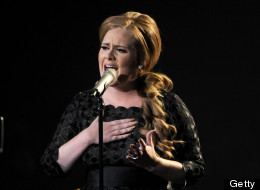The MALE GAZE imprisons women – it objectifies us, uses
us, and turns us into prey.
Throughout mediums (television, movies, ads, music
videos) there is usually one thing in common: women’s bodies are selling
products. They are being posed in sexual, disturbing, offensive ways in order
to grab the consumer’s attention and sell the product – even if the product is
something as mundane as a sandwich.
This sexual portrayal of females is the MALE GAZE. It is
perception through the eyes of a man.
 |
| By the way it says: 8 AIRBAGS ...really? |
Since the beginning of time, women have been treated
inferior to men. Men have always had the power – and one result of this may be
the images we now see. During the birth of propaganda men were the ones in top
positions, therefore they were the ones in charge of what was advertised. They
were also the main consumers. This explains why most media is focused on male “interests,”
such as the female body. Of course, years later, we have progressed (a little),
and women are now capable of being in top positions as well. They now have the
chance of having say in what gets advertised, and are also consumers. However,
I believe it is a routine of habit the reason we still see these sexist ads.
Even in selling women products, females are portrayed through the MALE GAZE.


Fortunately, the OPPOSITIONAL GAZE has surfaced to
challenge the MALE GAZE. According to Bell Hooks, the OPPOSITIONAL GAZE was
created when females realized they could not identify with the women in the
media. More specifically, the OPPOSITIONAL GAZE began when black females could
not relate to the white women in cinema, or to the stereotypical black female
counterpart. For example, Bell Hooks mentions Sapphire’s character. She was
created to represent a stereotypical black female both blacks and whites could
hate. However, black females related to her and therefore embraced her (p120).
They challenged the media by doing so. The OPPOSITIONAL GAZE allowed black
women to “critically assess the cinema’s construction of white womanhood as
object of phallocentric gaze and choose not to identify with either the victim
or the perpetrator.” In turn this challenged “woman as image, man as bearer of
the look” (p122-3).
Using the OPPOSITIONAL GAZE, women can take control of
how to react to the images we see in the media. By using the MALE GAZE to
present products, the media is suggesting women should always be this way (to
young females and males alike). However, being aware of this advertising
strategy will aid us in blocking this nonsense out.
Until recently I felt the need to be thin and “sexy,” to
reveal my “female” attributes whenever possible, because I thought it would
make me attractive. I was obviously brain washed by the media from a young age.
I was always a huge fan of Disney’s Jasmine and Pocahontas, as well as Barbie,
and even with those characters you’re presented with a fake image of what a
girl is supposed to look like: perfect breasts, thin, small waist, and accentuated
hips.
Slowly but steadily, I’m coming to realize being a woman isn’t
all about being objectified by men. All it takes is awareness to take the first
step in the right direction.
For one last DISGUSTING image, I share this with you:
I have no idea how this was even let out in public. It is overtly sexualized, and even the model's face isn't pleasing. She looks disturbed, scared, maybe even drugged? I'm not even sure, all I am sure about is THIS IS NOT GOOD ADVERTISING UGHH!
Source:
Hooks, Bell. "The Oppostional Gaze." Black Looks: Race and Representation. Boston: South End Press, 1992




















